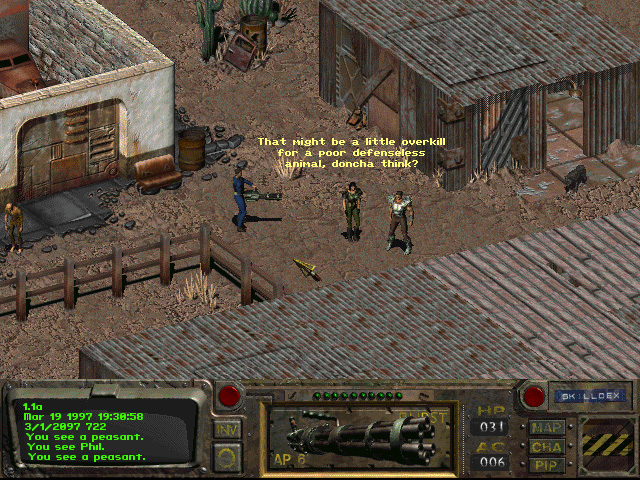
Fallout 4 is here and it's shaping up to be an epic experience, beginning just before the Great War in 2077 and then jumping forward 200 years. The game casts players as the sole survivor of Vault 111, exploring the radiation-blasted wastelands of New England and visiting the broken remains of Boston, Massachusetts.
If you want to see the game looking anything like as good as Bethesda's fantastic Wanderer trailer, you'll really want to invest in the PC version, which will run in as high a resolution and as fast a frame rate as your system will allow. For the ultimate experience – and to take the fullest advantage of the tech driving Fallout 4's visuals – it might be time to think about upgrading your GPU.
If you’re looking to build a PC system for Fallout 4 today, or to upgrade an older rig for the best possible performance with 60 FPS gameplay, NVIDIA recommends that you have a GeForce GTX 970 or GTX 980 Ti. Check out NVIDIA’s full recommended specs.
If you're new to the Fallout series and you're not quite sure what it's all about, we've put together a quick guide to the previous games.
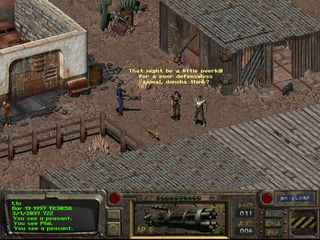
Fallout (1997)
Fallout was a very different game when it started out in the 1990s. If you're only familiar with the more recent Fallout 3 and New Vegas, the original Fallout's going to be a bit of a surprise. It's more of a traditional role-playing game whose post-apocalyptic world is rendered in isometric 3D. Everything is done via mouse clicks rather than you directly controlling your character, and the combat is turn-based rather than played out in real time, with a set number of action points, which you can use to move, fire, reload and so on, to use in each turn.
Despite the differences, though, Fallout lays the foundations for the rest of the series, introducing the game's alternate future where everything gets a bit stuck in the 1950s and vacuum tubes rather than transistors are the cornerstone of technology. Global tension over scarce resources finally boils over into nuclear war in 2077. And plenty of its features will be familiar to more recent converts, including the SPECIAL (Strength, Perception, Endurance, Charisma, Intelligence, Agility and Luck) system of character attributes, the Pip-Boy portable computer, the barren wasteland populated by ghouls and super mutants, and of course the 1950s-style soundtrack.
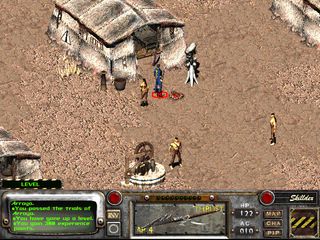
Fallout 2 (1998)
The original Fallout was never a game that took itself too seriously and its sequel, released just a year later, went a lot further. With its tongue planted firmly in its cheek much of the time, Fallout 2 gleefully referenced Monty Python, broke the fourth wall in its in-game dialogue, and allowed you to create a character that could only communicate in grunts if you wanted to.
Set 80 years after the first game, it casts you as a descendant of the original Vault Dweller from Fallout. You are tasked with a mission to return to Vault 13 and retrieve a device that can save your people and transform their wasteland home into a thriving community. Naturally things get a little more involved than that; it's a bigger and more refined title than its predecessor, in which your mission to save the village pans out into a battle against the remnants of the old US government, and just like in Fallout there's an enormous scope for playing the game your way, with loads of character options, a non-linear story with plenty to do, and the choice of shooting, talking or sneaking your way out of tricky situations.
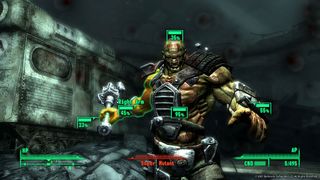
Fallout 3 (2008)
That's right; ten whole years passed between Fallout 2 and Fallout 3, but a lot happened in that time. There were in fact a couple of Fallout spin-off games released along the way – Fallout Tactics: Brotherhood of Steel, released in 2001, and the console-based Fallout: Brotherhood of Steel from 2004. When Fallout 3 hit the shelves it introduced a whole new 3D look, alongside a raft of new features.
Besides the business of being able to explore the Fallout world in a whole new way, with a massive open environment (set around Washington D.C. rather than the California of the previous games) to explore, the big change in Fallout 3 was the combat. Naturally turn-based combat was out of the question, but rather than simply turn the game into a glorified shooter, Bethesda introduced the Vault-Tec Assisted Targeting System, or V.A.T.S., which enables you to stop time in combat and call up an AR overlay of your enemy, highlighting body parts and showing you the percentage chance of hitting each one. It's a clever combination of real-time and turn-based combat that allows you to shoot tactically when it matters, and lets you choose to go for a quick headshot kill or instead to try to disable tougher opponents.
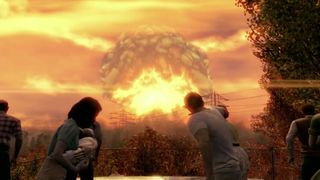
Fallout New Vegas (2010)
Created by Obsidian Entertainment, a company founded by former members of the original Fallout developers, Fallout: New Vegas moved the action to the Mojave Desert, with the former Las Vegas as the game's primary focus, as well as a battle for control over the Hoover Dam. Obsidian re-introduced the reputation system from the original games, so that your actions throughout the game would affect the way in which you interacted with other characters, and added a special Hardcore mode that added a whole new level of realism and intensity to the game.
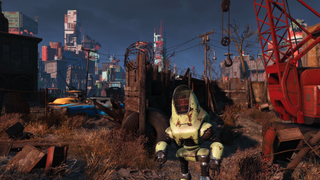
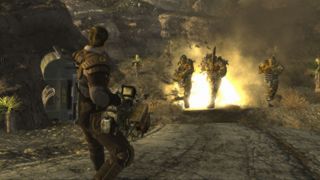
Obsidian also made some welcome adjustments to the combat, adding V.A.T.S.-specific attacks while implementing iron sights on most guns so that you could target accurately without having to rely on V.A.T.S. It also introduced firearm modifications – something that Fallout 4 is taking to a new extreme with its massive range of weapon mods – as well as the ability to craft your own ammunition. And of course, with much of the game being set in New Vegas, it also allowed you to visit casinos to play gambling mini games including roulette, slot machines and blackjack, and hopefully win some money.
Sponsored by NVIDIA
The biggest gaming news, reviews and hardware deals
Keep up to date with the most important stories and the best deals, as picked by the PC Gamer team.
